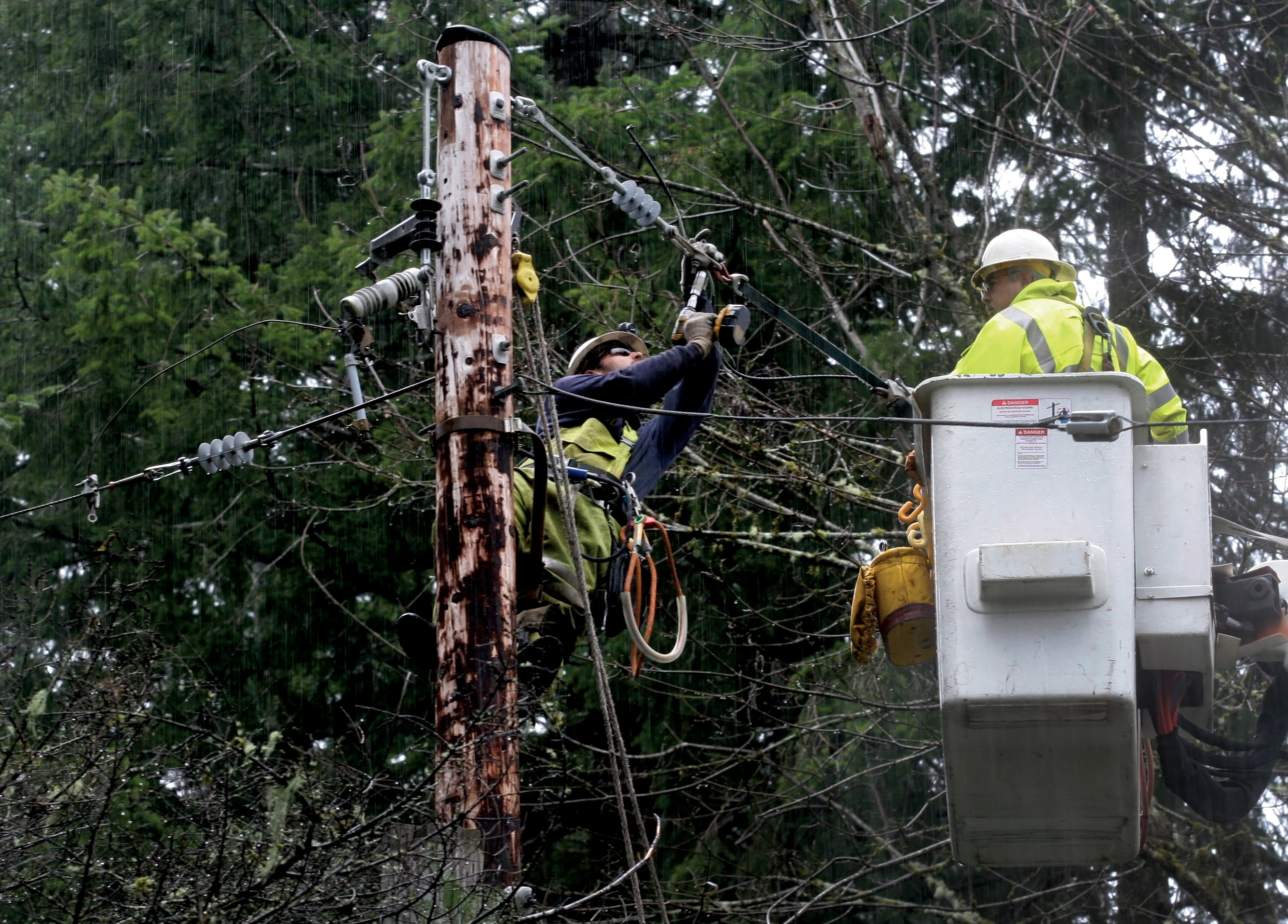Tribal Government & News
Storms send South Yamhill River to fourth-highest crest ever

A series of Pacific storms that battered Oregon and southwestern Washington between Sunday, Dec. 6, and Wednesday, Dec. 9, sent the South Yamhill River at Willamina to its fourth highest crest ever recorded, according to the National Weather Service’s Advanced Hydrologic Prediction Service.
The South Yamhill River reached 14.72 feet during the early morning of Tuesday, Dec. 8, and sent water cascading across Highway 18 just northeast of Spirit Mountain Casino at Rowell Creek Road, limiting traffic to one lane and shutting down the highway briefly.
The river’s record crest is 17.1 feet in 1964.
Because of the inclement weather and threat of flooding, Grand Ronde Governance Center employees were sent home at noon Monday, Dec. 7, the only interruption in work hours during the stormy weather. According to the Weather Channel, the Grand Ronde area received more than 7 inches of rain in the first nine days of December.
A break on Tuesday, Dec. 8, allowed the rain to seep into the ground and rivers and creeks to recede before another storm barreled into the area on Tuesday evening and Wednesday morning. However, the storm was not as intense and the South Yamhill River only reached 13.3 feet and stayed within its banks.
Tribal employees reported to work at regular times on Wednesday, Dec. 9.
Although more rain fell consistently in the Grand Ronde area later in the week, the storms were not as wet and river levels decreased dramatically.
Tribal Emergency Operations Coordinator Jamie Baxter activated the Tribe’s Incident Management Team on Monday, Dec. 7, to monitor the weather situation and prepare for possible flooding in the Grand Ronde area.
The team, led by Planning Department Manager Rick George, met on Monday and Tuesday, and included Tribal staff and representatives from the Grand Ronde Police Department, Tribal Council, General Manager’s Office, Publications, Human Resources, Public Works, Facilities and Maintenance, Natural Resources, Information Systems, Planning, GIS and other departments.
Even as late as Thursday, Dec. 10, the team was sending out warnings on the Tribe’s Facebook page regarding possible funnel clouds and lightning in the Grand Ronde area.
Damage to Tribal buildings was relatively minor, with water seepage reported to three Tribal buildings, as well as driveway rocking that was washed away from the access road off Highway 22. The day-use area also flooded, but damage was inconsequential.
Spirit Mountain Casino General Manager Stan Dillon said the storms caused limited closures because guests left early on Monday and employees who live far away called in because of flooding in the areas in which they reside.
“We closed bingo, Playworld, poker, keno and Legends,” Dillon said. “There was no damage to the facility on the first night of the flooding.”
However, the casino experienced power issues on Tuesday.
“Two of our generators did not kick in like they are supposed to,” Dillon said. “So we had the area of the casino near the main cage and poker go dark, as well as the lodge, ballrooms, etc. This did cause bingo to close and we refunded guests their money.”
Besides water limiting travel on Highway 18 on Monday night, Grand Ronde Road south of the highway was unpassable on Monday and Highway 22 (Hebo Road) west of Grand Ronde was closed after a portion of the road washed away at milepost 12.
In addition, a tree fell west of milepost 19 on Highway 18 on Tuesday night, affecting power in the Grand Ronde area for some residents.
High winds also distributed tree debris throughout the area.
On Friday, Dec. 11, Oregon Gov. Kate Brown declared a state of emergency in 13 counties, including Polk, Yamhill and Tillamook.
“Heavy rains and win have required the evacuation of residences, and mudslides and high water have severely damaged or blocked major roadways in these areas of the state,” Brown said. “The emergency declaration ensures state resources, emergency response personnel and equipment can be activated to respond to communities in need if their local resources are exhausted.”
